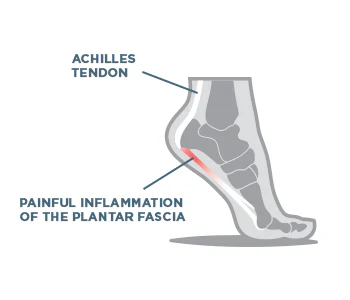
Heel pain from plantar fasciitis can make even simple daily steps uncomfortable – and it hits runners especially hard. Every landing in a run sends shock through the already irritated plantar fascia. The right plantar fasciitis socks won’t cure the condition, but they can relieve pain, support the arch, and keep the foot more stable so each mile feels more manageable.
This guide focuses on plantar fasciitis running socks – plantar fasciitis socks that are specifically tuned for running and high-impact training. If you’re a brand owner, distributor, or buyer, these products let you serve a very clear niche: runners with plantar fasciitis who still want to keep moving.
You’ll learn:
- What makes the best plantar fasciitis running socks
- How plantar fasciitis running socks differ from normal running socks
- Recommended specs for your own plantar fasciitis running sock line
- Design and OEM tips to turn this niche into a profitable product range
Quick Answer: What Makes the Best Plantar Fasciitis Socks for Running?
The best plantar fasciitis running socks combine targeted arch support, firm but comfortable compression, and cushioned heel zones to reduce impact on the plantar fascia during runs. Look for graduated compression around 15–30 mmHg focused at the mid-foot and heel, moisture-wicking yarns, and seamless construction so runners get pain relief, fewer flare-ups, and long-run comfort without blisters or hot spots.
Plantar Fasciitis and Running: Why the Right Socks Matter

Plantar fasciitis is one of the most common causes of heel pain in adults. It develops when the thick band of tissue under the foot (the plantar fascia) is repeatedly overloaded, leading to micro-tears and inflammation. Runners, people who stand for long hours, and those who are overweight or have high arches/flat feet are at higher risk.
For runners, this typically shows up as:
- Sharp heel pain with the first steps in the morning
- Arch and heel soreness that worsens during or after runs
- Foot fatigue and tightness after long-standing shifts or intense workouts
Most treatment plans combine supportive footwear, stretching, load management, and sometimes insoles or night splints. Plantar fasciitis socks for running sit in the daily management layer: they support the arch, help control swelling, and make shoes more comfortable for training and recovery.
For your brand, plantar fasciitis running socks can be positioned as:
- A premium add-on that raises average order value and repeat purchases
- A wearable, non-invasive pain-relief solution for runners
- A performance upgrade compared with normal running socks
Key Features Runners Look For in Plantar Fasciitis Running Socks
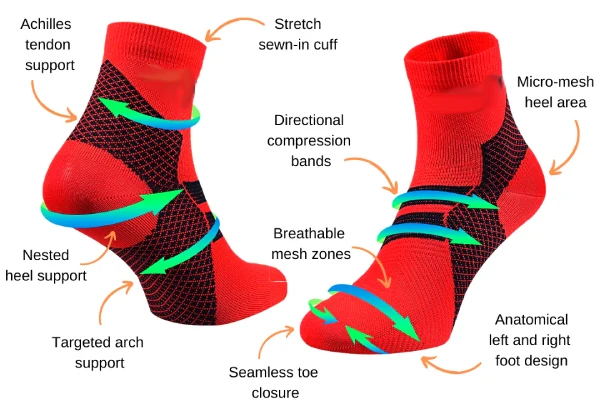
Arch Support That Lifts and Protects the Plantar Fascia
Runners using plantar fasciitis socks need the arch gently lifted and stabilized, not left to collapse with every step.
For end users, good arch support means:
- A defined elastic band or a tighter knit under the mid-foot
- A “supported” feeling around the arch without cutting off circulation
- Less strain on the plantar fascia during push-off and landing
For brands and buyers, specify in your tech pack:
- Stretch and recovery requirements so that support doesn’t loosen after repeated washes
- A dedicated arch support zone (not just “overall compression”)
- Higher stitch density or elastic yarn focused under the arch
Compression Zones to Control Swelling and Fatigue
Graduated compression supports circulation and helps control post-run swelling around the heel and arch.
For runners, effective compression:
- Feels snug and supportive, not painfully tight
- Reduces “heavy feet” and inflammation after long or intense workouts
- Supports both the arch and Achilles for more stable strides
For your plantar fasciitis running sock line, a simple framework:
- 15–20 mmHg – light to moderate compression for everyday relief and casual runners
- 20–30 mmHg – firmer compression often preferred by symptomatic runners and high-mileage training
Keep end-user safety in mind and remind customers to consult healthcare professionals if they have circulation or cardiovascular issues.
Breathable, Moisture-Wicking Socks for Intense Workouts
“Breathable socks for intense workouts” is an increasingly common buying request. Runners with plantar fasciitis do not want hot, soggy socks that trigger blisters or odor.
Prioritize materials and structures that:
- Wick sweat away from the skin (nylon + spandex, performance polyester, or blends with technical fibers)
- Use mesh ventilation panels on the instep and sides
- Dry quickly between sessions so odor and bacteria do not build up
Seamless Construction to Prevent Blisters and Hot Spots
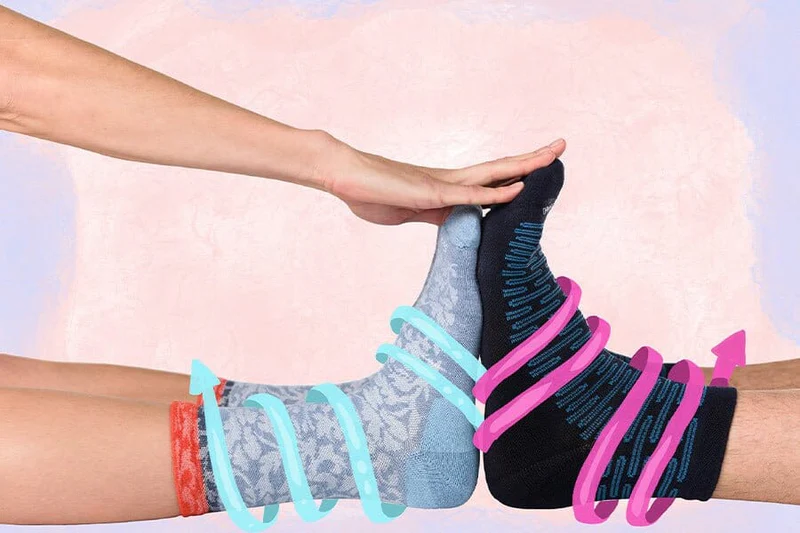
People with plantar fasciitis are often already sensitive around the heel and arch. Thick seams and rough toe closures quickly become a reason to abandon a product.
Aim for:
- True seamless toe or flat-linked toe closure
- Smooth internal surfaces with no bulky threads
- Clean transitions between compression and mesh zones, so there are no ridge lines that rub
“Seamless plantar fasciitis running socks” is a strong phrase you can use in product titles and bullets to highlight comfort.
Design Ideas That Sell in the Plantar Fasciitis Niche
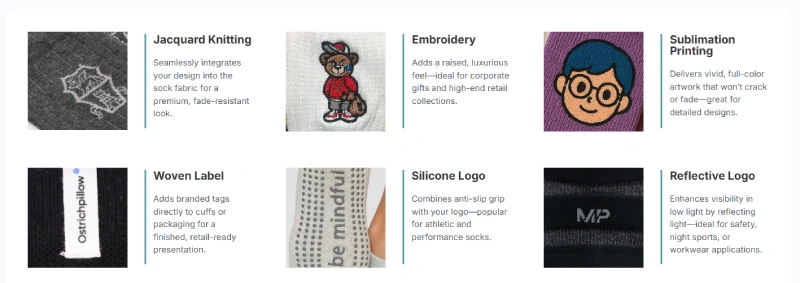
Logo Placement and Branding Zones
Place logos where they are visible in real use: cuff, ankle side, or instep so they show above the shoe and in race photos. Use woven logos for performance plantar fasciitis running socks that face heavy washing, and prints or heat transfers for trend-led capsules where color and detail matter more. Keep logo size, position, and style consistent across the range so retailers can merchandise a clear block, strengthen brand recall, and justify higher price points versus generic socks.
Colors, Patterns, and Collections for Runners With Plantar Fasciitis
Treat colors and patterns as tools for clear collections, not random SKUs. Build themed lines such as a Marathon Pack with medium-cushion crew plantar fasciitis running socks in coordinated race colors, a Gym & HIIT line with breathable no-show styles, and a Trail Series with merino-blend crews and reflective accents. Collections support bundle pricing, encourage runners to buy multiple pairs to complete a set, and help retailers create story-driven displays that move more volume per shelf or category page.
Eco-Friendly and Premium Options
A distinct eco-premium tier lets you target sustainability-focused runners and lift your overall price architecture. Use recycled nylon or polyester, certified yarns, and minimalist packaging that clearly communicates environmental benefits without overcrowded claims. Pair these materials with neutral or nature-inspired palettes and clean branding so the line looks refined and long-lasting. Positioned correctly, eco-oriented plantar fasciitis running socks act as price anchors that support higher margins and make your standard models look more affordable and attractive in comparison.
How Plantar Fasciitis Running Socks Differ From Normal Running Socks
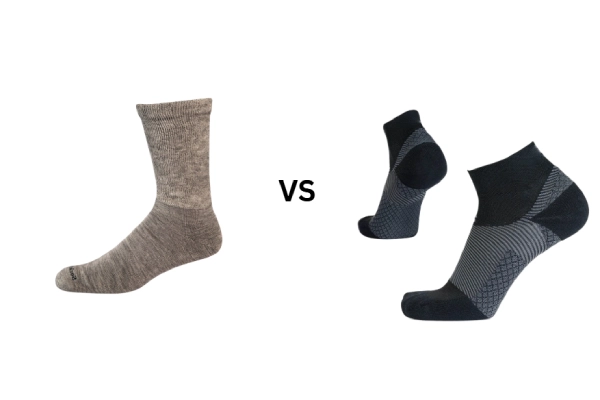
Plantar fasciitis socks can be designed for many activities – walking, standing, or general daily wear. Here, we focus on how plantar fasciitis running socks differ from normal running socks, specifically for runners with heel and arch pain.
| Feature | Normal Running Socks | Plantar Fasciitis Running Socks |
|---|---|---|
| Support | Light arch band mainly to keep the sock in place | Targeted, firmer arch and heel support to reduce strain on the plantar fascia and improve foot stability |
| Compression | Mild, even compression across the foot and ankle | Defined compression zones around the arch, heel, and often the Achilles to support circulation and reduce fatigue |
| Cushioning | General underfoot cushioning for basic comfort | Strategically placed padding at the heel and along the arch to absorb impact and protect sensitive areas |
| Use case | Basic comfort and moisture management during everyday runs | Pain management, focused support, and recovery aid for runners with heel and arch issues |
How to Work With a Running Sock Factory Without Costly Mistakes
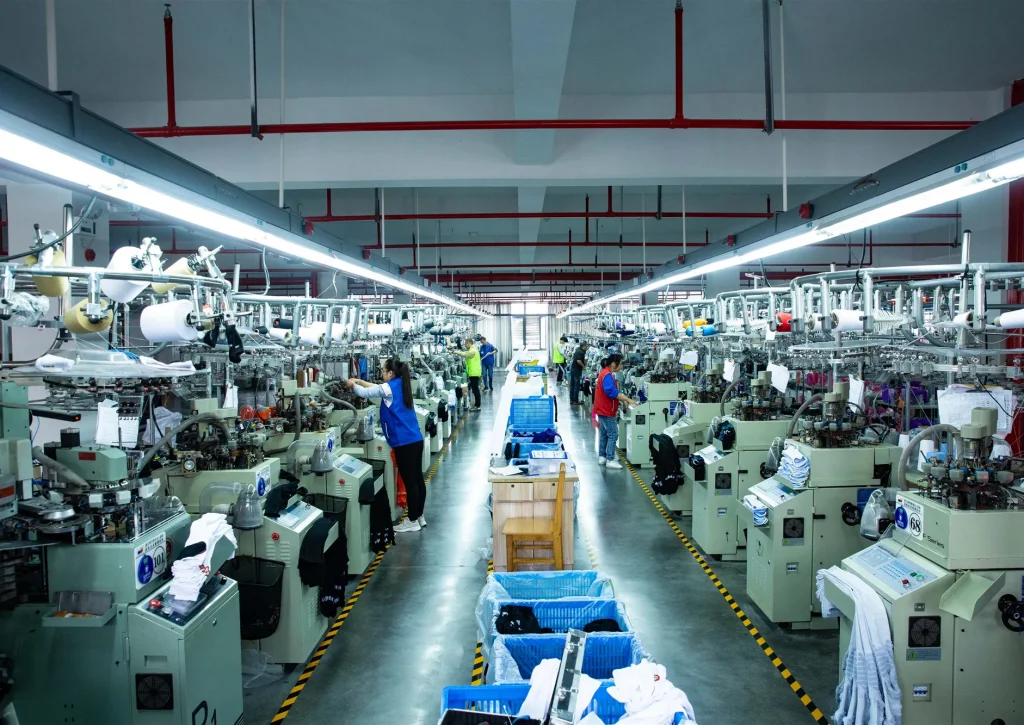
Even the best plantar fasciitis running sock concept can fail if the factory side is not managed well. At a minimum, make sure you:
- Lock specs clearly in your tech pack (compression range, support zones, yarn blend, sizes, wash performance).
- Get wear-test samples on real runners before you place bulk orders.
- Agree on realistic MOQ and lead times so you can test the market before scaling up.
For a full checklist on inspections, sampling plans, and how to control defects, see our guide to AQL inspection for socks and hosiery. This is where you set the rules that keep quality, cost, and timelines under control.
FAQs About Plantar Fasciitis Running Socks
Do plantar fasciitis running socks really work for pain relief?
Yes. Plantar fasciitis socks use targeted compression and arch support to reduce strain on the fascia, improve circulation, and limit swelling, which can ease heel and arch pain for many people. They are most effective as part of a broader plan that also includes proper footwear, stretching, and load management, rather than a stand-alone cure.
Can I run in plantar fasciitis socks or only use them for recovery?
You can usually run in plantar fasciitis socks as long as they fit well and feel comfortable. They’re designed to provide compression around the arch and heel, helping reduce inflammation and pain during activity as well as afterward. Many runners use them both while running and for post-run recovery, but you should stop or adjust use if pain or numbness increases.
How long should I wear plantar fasciitis running socks each day?
Most people wear plantar fasciitis socks during the activities that trigger pain, such as runs, long walks, or work shifts, and sometimes for a few hours afterward. The key is that they stay comfortable: they should not cause numbness, tingling, or deep marks. If you’re unsure, start with a few hours per day and gradually increase wear as tolerated.
What compression level is best for plantar fasciitis running socks?
For plantar fasciitis, many experts recommend moderate to firm compression, typically in the 15–30 mmHg range. Lower levels may feel more comfortable for new users or lighter activity, while runners with significant symptoms often prefer 20–30 mmHg for better support and swelling control. Always consider existing circulation issues and consult a professional if you have vascular or cardiac conditions before using higher compression.
Can I wear plantar fasciitis running socks with orthotics or insoles?
Yes. Plantar fasciitis socks and orthotics often work best together. The sock provides compression to manage swelling and support soft tissue, while the orthotic controls foot mechanics and redistributes pressure inside the shoe. Make sure the combination does not feel too tight in the forefoot or heel, and adjust sock thickness or shoe volume if your footwear starts to feel cramped.
Are plantar fasciitis running socks enough on their own to fix heel pain?
No. Plantar fasciitis running socks can significantly reduce pain and improve comfort, but they don’t address every cause of the condition. Most podiatrists and physical therapists view them as one tool alongside supportive shoes, activity modification, stretching, strengthening, and sometimes orthotics or night splints. Used within a complete treatment plan, they can speed relief; used alone, results are usually limited to symptom management.
Turn Plantar Fasciitis Pain Into a Product Line Runners Trust
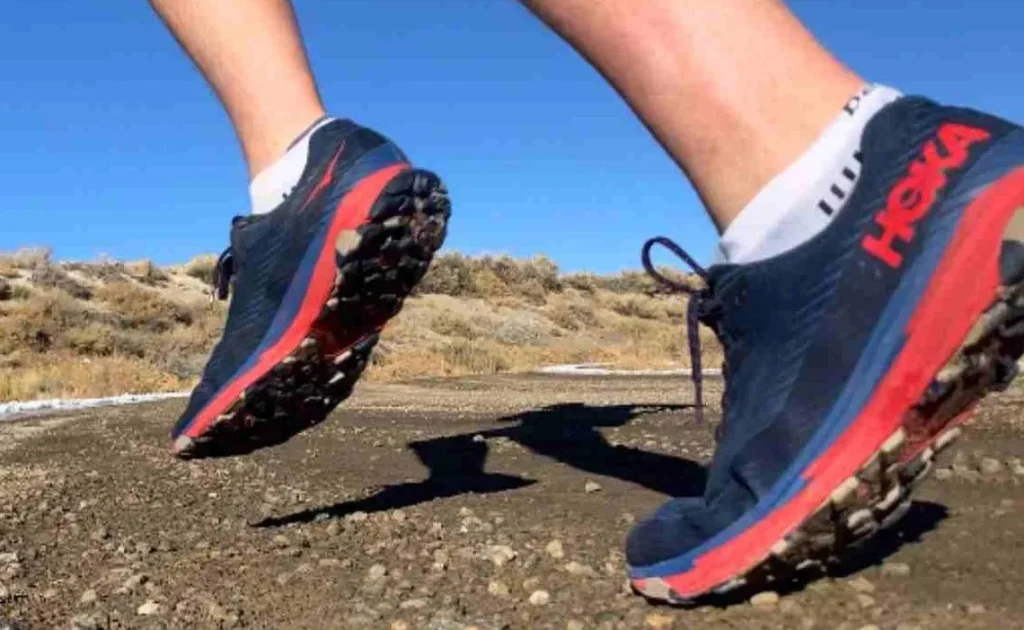
Plantar fasciitis will keep showing up in your customers’ lives – and on your order sheets. Brands that offer truly supportive plantar fasciitis running socks earn more than a one-time sale: they become the go-to choice for runners who want to keep training in comfort and confidence.
At Max Hosiery, we help B2B partners turn these needs into real products – from yarn selection and compression mapping to bulk production and private labeling. If you are planning or upgrading a plantar fasciitis sock line, share your target design, price range, and markets with us, and we’ll prepare a tailored spec proposal and quotation for your brand.
